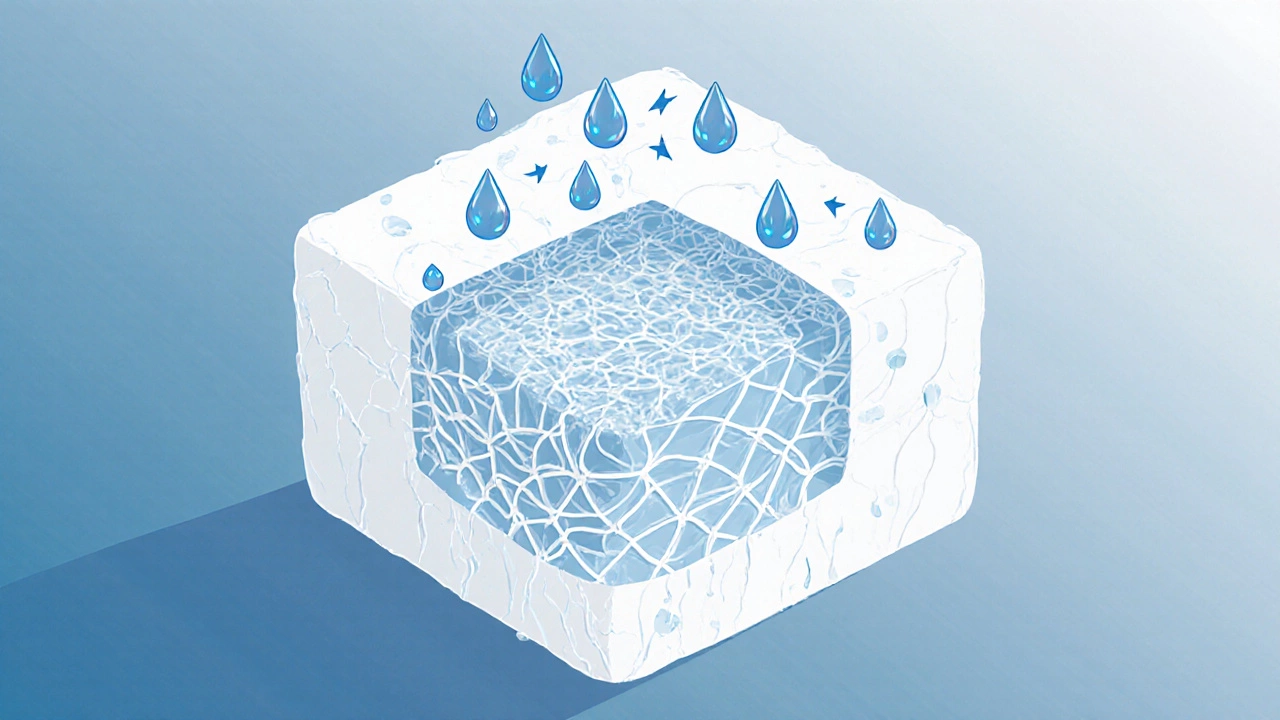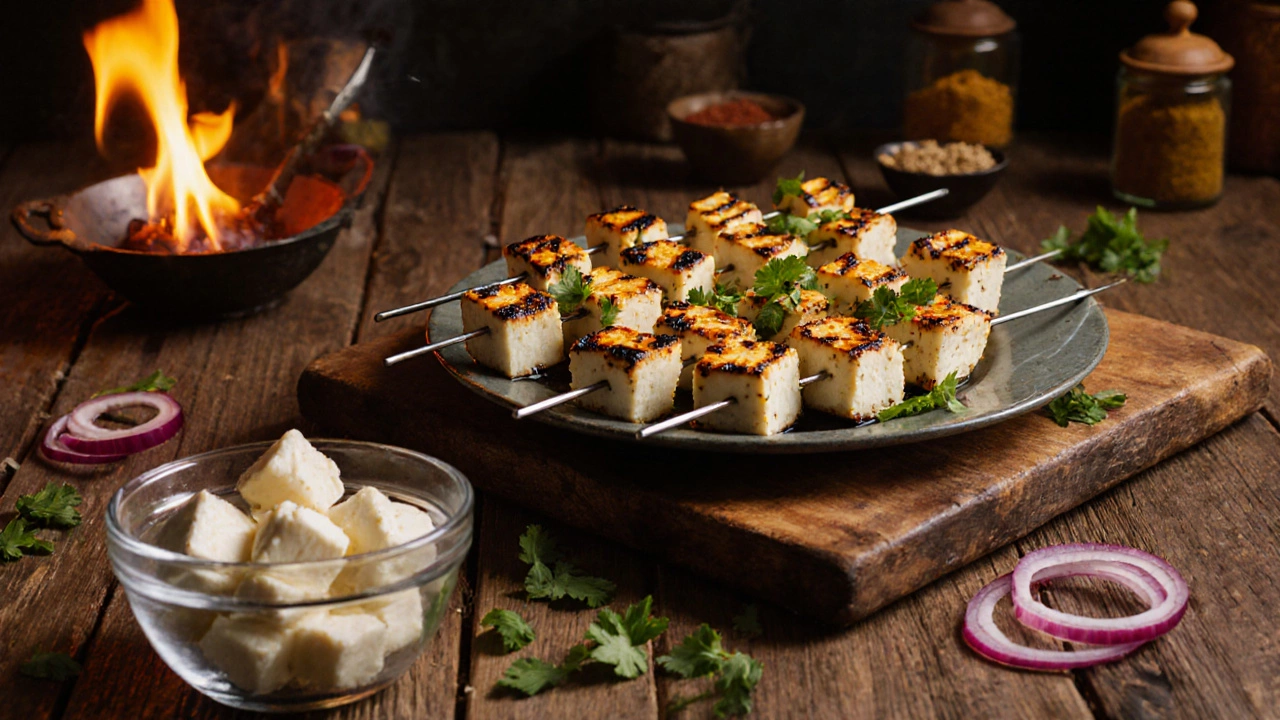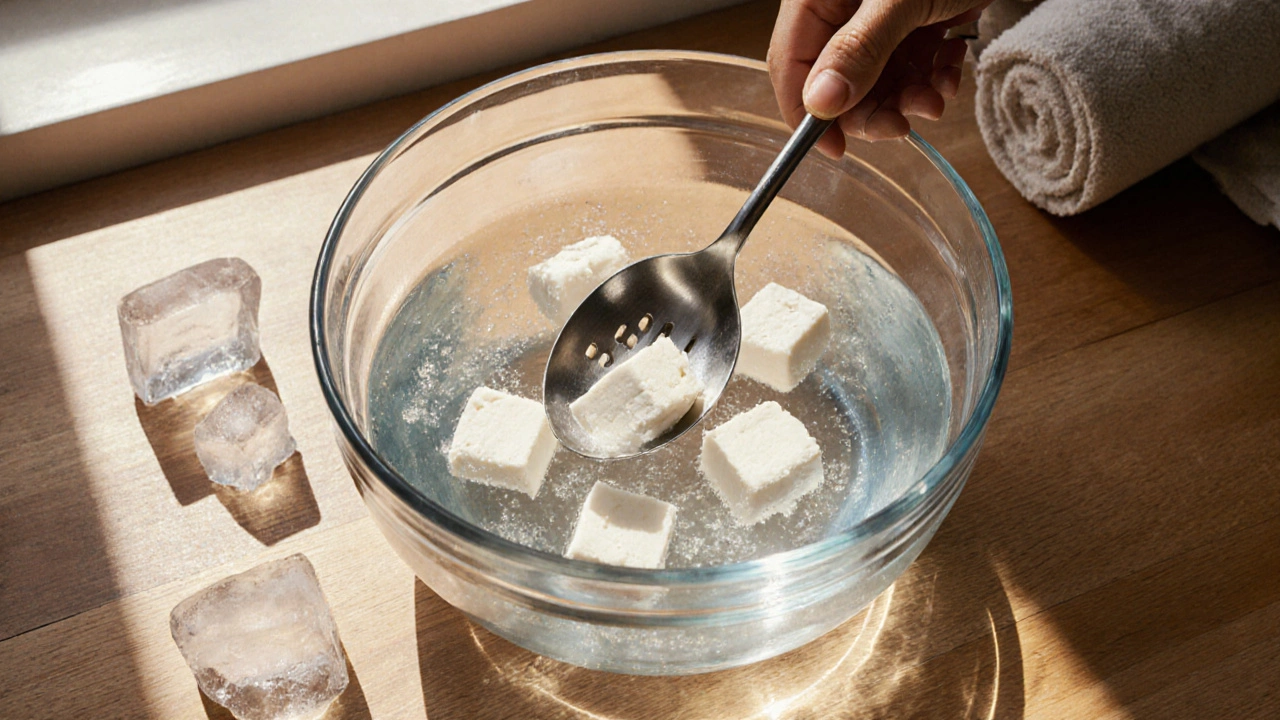Paneer Soaking Time Calculator
Optimize Your Paneer Texture
Calculate the perfect soaking time for your recipe based on the article's science-backed guidelines
Select Your Recipe
Cooking Tips
-
5-10 min
For curries & stir-fries
Soft texture for easy cooking
-
15-30 min
For desserts
Maximum moisture absorption
-
0 min
For kebabs
Keep firm for skewering
Recommended Soaking Time
Select your recipe to see timing
Ever wonder why a quick dip in water makes homemade paneer a fresh Indian cheese made by curdling milk with an acidic agent feel silkier, richer, and easier to handle? The practice looks simple, but it rests on a mix of chemistry, tradition, and practical cooking hacks. Below we break down the why, the how, and the when, so you can stop guessing and start soaking with confidence.
Quick Takeaways
- Soaking adds moisture, softening the protein network and preventing a rubbery bite.
- Cold water locks in freshness, while a brief salt soak can boost flavor.
- Follow the 5‑minute method for most recipes; longer soaks are best for desserts.
- Skip soaking when you need a firm, grill‑ready block (e.g., kebabs).
- Common pitfalls: over‑soaking, using hot water, or forgetting to pat dry.
What is Paneer and Why the Soak?
Milk the primary liquid from which paneer is derived is heated, then curdled with an acid such as lemon juice the citrus juice commonly used to separate curds from whey or yogurt a fermented dairy product that supplies lactic acid. The curds are collected, pressed, and cut into cubes. Freshly pressed paneer is dense, often a bit crumbly, and its surface can feel dry. A quick water soak re‑hydrates the outer layer, making the cheese more pliable and less likely to break apart during frying or grilling.
The Science Behind Soaking
Paneer’s texture hinges on casein the main milk protein that forms a gel when acidified. When acid hits hot curd the solid part that separates from whey in cheese making, casein micelles unfold and bond, trapping water inside a protein network. Pressing squeezes out excess whey, but it also tightens those bonds, leaving a relatively dry surface.
Soaking in cold water does two things:
- Moisture migration: Water diffuses back into the loosely packed outer casein layers, expanding them slightly and easing the bite.
- Temperature shock: Cold water cools the surface quickly, preventing further protein tightening that would otherwise continue as the cheese sits.
When you add a pinch of salt to the soak, the sodium ions weaken the protein bonds a bit more, letting flavors from later marinades seep in faster. This is why many chefs soak paneer before marinating it for tikka.
Step‑by‑Step: How to Soak Paneer
- Place the freshly pressed paneer blocks in a clean bowl.
- Fill the bowl with cold tap water - enough to fully submerge the cheese.
- If you prefer a subtle salty boost, dissolve ½ teaspoon of sea salt in the water.
- Let the paneer sit for 5-10 minutes. For desserts like rasgulla, extend the soak to 30 minutes.
- After soaking, lift the cubes with a slotted spoon and pat them dry with a clean kitchen towel.
- Proceed to your recipe - the paneer is now ready for grilling, frying, or soaking in a gravy.
Tip: Use a shallow dish so the water level stays just above the cheese; this reduces the risk of water seeping into the interior, which could make the paneer soggy.

Variations on the Classic Soak
Cold milk bath: Swap water for cold milk the liquid used as the base for paneer. The milk bath adds a faint dairy richness and can be useful when the paneer will be blended into a creamy sauce.
Salted ice water: Add ice cubes and a generous pinch of salt. This method is popular for making paneer cubes that hold their shape on high‑heat skewers.
Herb‑infused water: Toss a few sprigs of mint or cilantro into the water for a subtle aromatic hint. The herbs will not overpower the cheese but will give a pleasant after‑taste in fresh salads.
Benefits of Soaking
| Attribute | Soaked Paneer | Unsoaked Paneer |
|---|---|---|
| Texture | Soft, slightly yielding, less prone to cracking | Firm, dry surface, can crumble when handled |
| Moisture Content | ~68% (adds ~5-8% water) | ~60% |
| Flavor Absorption | Marinades penetrate 30% faster | Slower absorption, surface‑only |
| Cooking Performance | Even browning, less sticking to pan | Can stick, may form hard crust |
| Shelf Life (refrigerated) | Up to 4 days | 2-3 days |
Notice how the modest increase in moisture translates into a noticeable difference when you fry the cubes. The water acts like a thin steam layer, preventing the protein surface from scorching too quickly.
Common Mistakes & How to Fix Them
- Using hot water: Warm water can partially melt the casein network, leading to a mushy interior. Stick to cold or chilled water.
- Soaking too long: Beyond 30 minutes, the paneer starts to lose its structural integrity, making it fall apart in curries. Keep to the recommended time windows.
- Skipping the pat‑dry step: Excess surface water will cause splatter and prevent a good sear. Always blot dry before cooking.
- Not using enough water: If the cheese sits on the bottom, only part of it hydrates. Ensure full submersion.

When Not to Soak
Some dishes actually benefit from a firmer paneer:
- Kebabs & Tikkas: A drier surface helps the cheese hold its shape on the skewer and develop a charred crust.
- Paneer Bhurji: Crumbled paneer needs a bit of bite to contrast with the soft veggies.
- Stuffed Parathas: A firmer filling prevents the dough from getting soggy.
In these cases, skip the water soak and go straight to marinating or cooking.
Quick Checklist Before You Start
- Use cold, filtered water (or ice‑water for extra firmness).
- Optional: add ½ tsp sea salt for flavor boost.
- Soak time: 5 min (regular dishes) - 30 min (desserts).
- Pat dry thoroughly before heat.
- Store excess soaked paneer in a sealed container with fresh water; change water daily.
Frequently Asked Questions
Does soaking paneer affect its nutritional value?
The brief water soak adds only a few grams of water; protein, calcium, and fat remain unchanged. Salted water adds a negligible amount of sodium.
Can I use bottled or mineral water?
Yes, but plain tap water works fine if it’s clean. The goal is just temperature and moisture, not mineral content.
Should I refrigerate soaked paneer?
Store it in a covered bowl in the fridge. Change the soaking water every 24 hours to keep it fresh for up to four days.
Is there a vegan alternative to this soaking step?
For tofu, a quick rinse in cold water improves firmness, mirroring the paneer effect. The principle is the same: re‑hydrate the surface.
Can I add spices directly to the soaking water?
Yes-ground cumin, fennel seeds, or a pinch of chili powder can infuse subtle flavor without overpowering the cheese.
Now that you know the why and how, give your next paneer dish a quick dip and watch the difference. It’s a tiny step that makes a big impact on texture, flavor, and cooking confidence.
